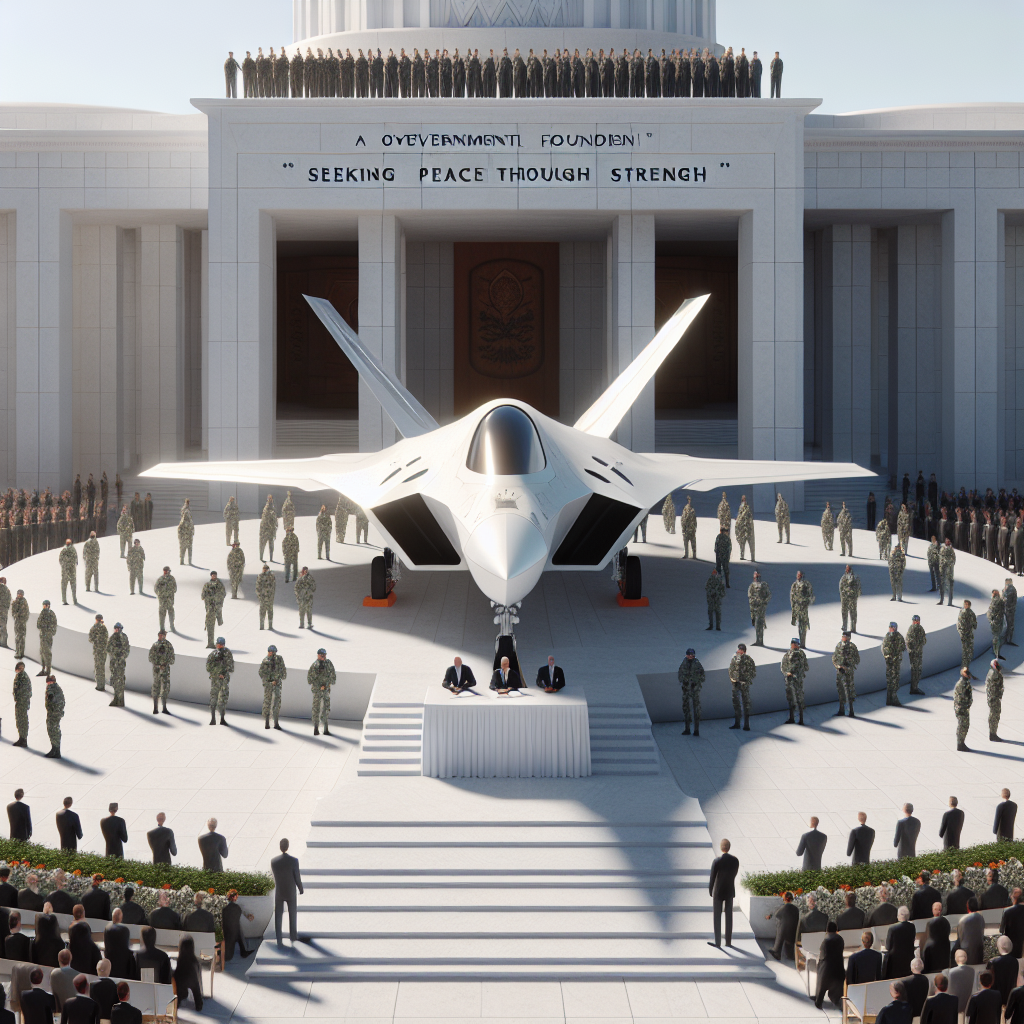On March 21, the United States under the Trump administration swiftly signed a contract for the sixth-generation fighter jet F-47, sending a strong signal about the future national defense policy. This once again emphasizes the White House’s foundation of “seeking peace through strength.”
President Trump revealed during the announcement of the F-47 project that a prototype aircraft had been secretly test-flown over the past 5 years. It will be equipped with state-of-the-art stealth technology, making it almost undetectable. Trump described the F-47’s stealth capabilities as something that “America’s enemies will never see coming.”
Many have described the F-47 fighter jet as a cornerstone for the U.S. military in establishing air superiority in the foreseeable future. This platform will integrate all the latest innovations in stealth, artificial intelligence, and drone technology.
The belief of the Trump administration is that if the U.S. military wants to prevent the next war, it needs to deploy new and better equipment. As Trump stated on March 21, “We hope we don’t have to use (the F-47) in combat.” “But you have to have it (F-47) in case it happens,” highlighting that America’s enemies will not know what hit them.
The F-47 will fill the significant gap left by the premature cancellation of the F-22 fighter program by the Obama administration, which severely limited the U.S.’s ability to maintain air superiority. Deploying the F-47 will significantly enhance America’s air power, allowing the U.S. and its allies to establish air supremacy in battle, thereby bolstering their capabilities.
U.S. Secretary of Defense, Pete Hegseth, said on Friday in the Philippines, “President Trump seeks peace… but to achieve peace, we must show strength.”
Renowned national security and foreign policy expert Dr. James Jay Carafano wrote on the “19FortyFive” website, emphasizing that winning in modern conflicts is more akin to making a smoothie than a fruit salad. Different aspects of warfare in various domains such as air, sea, land, cyber, and space need to be integrated for a unified combat capability.
Carafano listed various measures taken by the Trump administration to create the current warfare “smoothie” besides the Air Force:
Integrating strategic forces (nuclear weapons and missile defense) and conventional forces (tanks, aircraft, ships, etc.) to form a formidable deterrence. Both parties in the U.S. have made strong commitments to enhancing the country’s nuclear arsenal. Trump has also called for advancements in missile defense, including reinforcing homeland defense. A robust combination of offense and defense – striking enemies while protecting one’s troops and citizens – is the most potent and stable form of strategic deterrence.
Trump established the Space Force in his first term, leading to significant progress in U.S. space capabilities. Military operations in space serve as a powerful driver for operations in all other domains. The U.S.’s commitment to space activities in the military, civilian, and private sectors indicates Washington’s intention to surpass China in the space race, as Trump views China as the top threat to the U.S.
The Trump administration has sent a strong signal to significantly expand America’s naval power, even considering setting up a separate department within the National Security Council to address shipbuilding issues. Additionally, the intention to use port tariffs to counter China’s shipbuilding industry has been considered.
Recruitment has long been a challenge for the Army, but efforts have significantly increased now. This development aligns with the new leadership’s focus on readiness, combat capabilities, and lethality.
All these indicators align with the decision surrounding the F-47, indicating Trump’s desire to have a more dominant military force in line with his policy of seeking peace through strength. Trump’s defense policy fervor is not a one-time event but an essential aspect of his broad governance approach and the principle of seeking peace through strength. Strength brings peace, requiring both economic and military power; a strong economy is crucial for sustaining military dominance and robust capabilities. Therefore, Trump understands that only by reducing deficits, curbing inflation, and achieving real economic growth can the U.S. afford the ambitious F-47 program and other defense needs.
An official timeline for the F-47, as a replacement for the F-22, has not been released yet, but Trump stated that at least the first few F-47s will “take off” during his current term in office.
The Trump administration closely monitors China, with the President stating, “There is nothing in the world that can compare to it (F-47).”
The U.S. Air Force states that the F-47 will “defeat the most powerful adversaries and operate in the most dangerous threat environments imaginable.”

